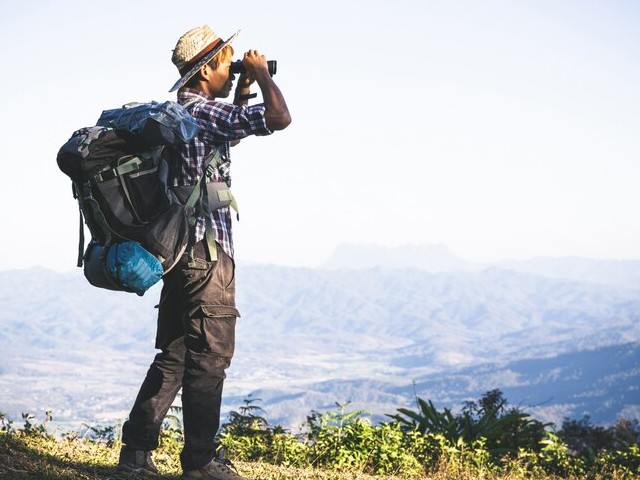How To Support Conservation Efforts While Climbing Kilimanjaro
Mount Kilimanjaro, the towering beacon of Tanzania, stands as not only Africa’s tallest peak but also as a symbol of nature’s grandeur. As enthusiasts and adventurers from around the globe come to conquer its heights and explore its beauty, the role of conservation becomes paramount to ensure that this majestic mountain remains unspoiled for generations to come. At the Kilimanjaro Centre for Trekking and Ecotourism (KCTE), we believe that the journey to the summit is intertwined with the duty to preserve it. Here’s how you can contribute to conservation efforts while embracing the challenge of climbing Kilimanjaro.
Embracing Eco-Friendly Trekking Practices
Pack In, Pack Out
One of the cardinal rules of trekking is leaving no trace. Whatever you carry in, you must carry out. This includes all forms of waste, particularly plastics, which are not biodegradable. By ensuring that you remove all your trash, you help keep Kilimanjaro pristine.
Use Water Wisely
Water is a precious resource on the mountain. Minimize water usage and avoid any form of water contamination. Using biodegradable soaps and avoiding washing directly in streams are practices that preserve the mountain’s delicate aquatic ecosystems.
Stick to the Path
While the temptation to venture off the beaten track might be appealing, straying from designated paths can lead to soil erosion and disturb local flora and fauna. Stick to the trails and respect barrier signs to minimize your ecological footprint.
Supporting Local Conservation Initiatives
Engage with Local Conservation Projects
KCTE is actively involved in various conservation projects and encourages climbers to participate or contribute. Whether it’s a tree planting initiative or a community clean-up drive, your involvement can make a significant difference.
Educate Yourself and Others
Awareness is the first step towards action. Learn about the unique biodiversity of Kilimanjaro and the challenges it faces. Share this knowledge with your peers. The more people know, the more they care, and the more they’re likely to act.
Choose Responsible Tour Operators
By booking your climb with responsible operators like KCTE, you ensure that your visit adheres to the highest standards of environmental stewardship. We are committed to sustainable practices and support local conservation efforts financially and through active participation.
Minimizing Carbon Footprints
Offset Your Travel
Consider offsetting the carbon emissions from your travel to Tanzania. This can be done through various online platforms that invest in renewable energy projects and forest conservation.
Opt for Eco-Friendly Transportation
While on the ground, choose transportation options that minimize environmental impact. Shared transfers and electric vehicles are excellent ways to reduce your carbon footprint.
Cultivating Cultural Respect and Support
Respect Local Customs and Communities
Understanding and respecting local customs and communities is crucial. This respect not only enriches your trekking experience but also supports the local economy and its people’s way of life.
Support Local Businesses
Purchase goods and services from local vendors. This not only contributes to the local economy but also reduces the environmental cost associated with long-distance transportation of goods.
Engaging in Wildlife Protection Efforts
Keep Wildlife Wild
Observe wildlife from a distance. Feeding or attempting to touch wildlife can disturb their natural behavior and endanger their survival.
Support Anti-Poaching Initiatives
KCTE supports local anti-poaching units. Contributions to these initiatives go a long way in protecting the diverse species that call Kilimanjaro home.
Conclusion: Your Role in the Legacy of Kilimanjaro
Climbing Kilimanjaro is an adventure of a lifetime and comes with a responsibility to protect this timeless landscape. By adopting eco-friendly practices, supporting local economies, and engaging in conservation efforts, you become part of Kilimanjaro’s ongoing legacy of natural wonder and cultural richness.
Ready to take the next step? Book your Kilimanjaro climbing adventure with Kilimanjaro Centre for Trekking and Ecotourism (KCTE) and ensure that your journey contributes positively to the mountain and its surrounding communities. Together, we can make a difference.
Frequently Asked Questions
How can I verify if a tour operator is genuinely engaged in conservation?
Look for certifications or affiliations with recognized environmental organizations. Check if the operator has transparent policies about how they contribute to conservation efforts.
What is the best time of year to climb Kilimanjaro for minimal environmental impact?
The best times are during the off-peak seasons, usually from March to May and from November to December. Fewer climbers result in less strain on the environment.
Can I participate in any conservation activities during my climb?
Yes, KCTE offers opportunities for climbers to engage in brief conservation activities during their expedition. This could include educational walks or participating in clean-up challenges.
Is it more eco-friendly to join a group trek or to go solo?
Joining a group trek can reduce the overall footprint per person as resources are shared, leading to less waste and fewer trips made by support teams.
In choosing to climb with Kilimanjaro Centre for Trekking and Ecotourism, you choose a path that respects and preserves the splendor of Kilimanjaro. Let’s trek responsibly and leave only footprints behind.




